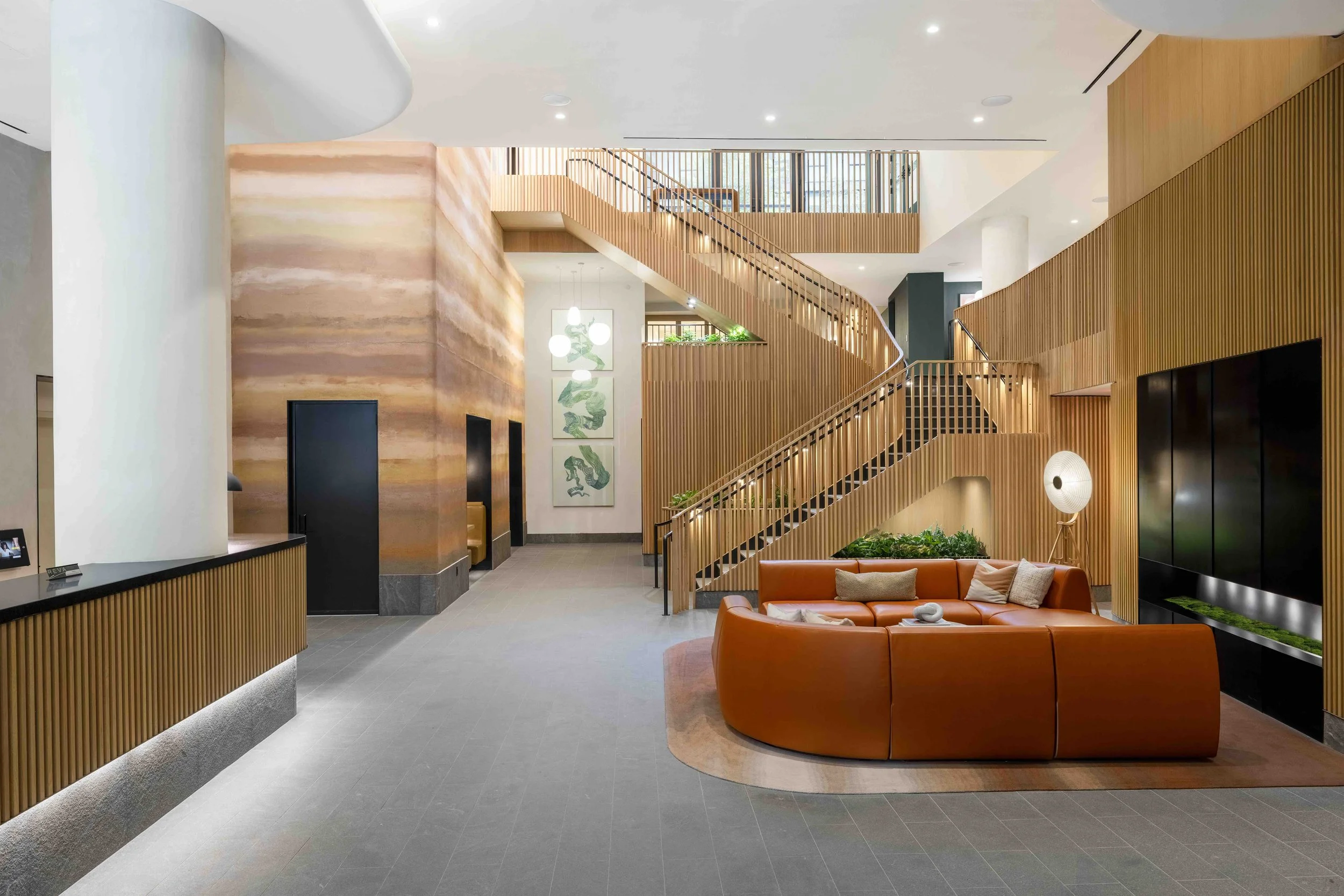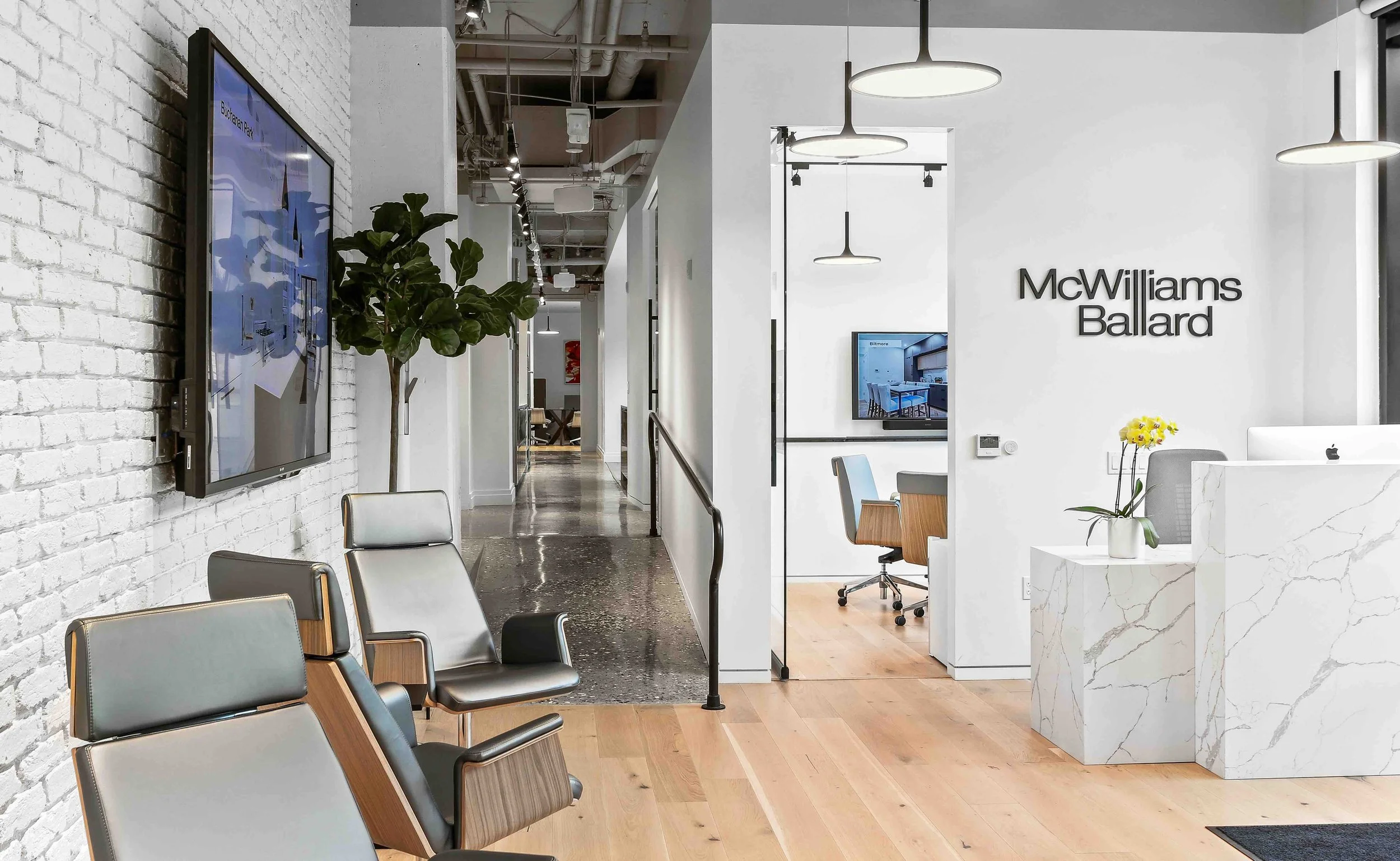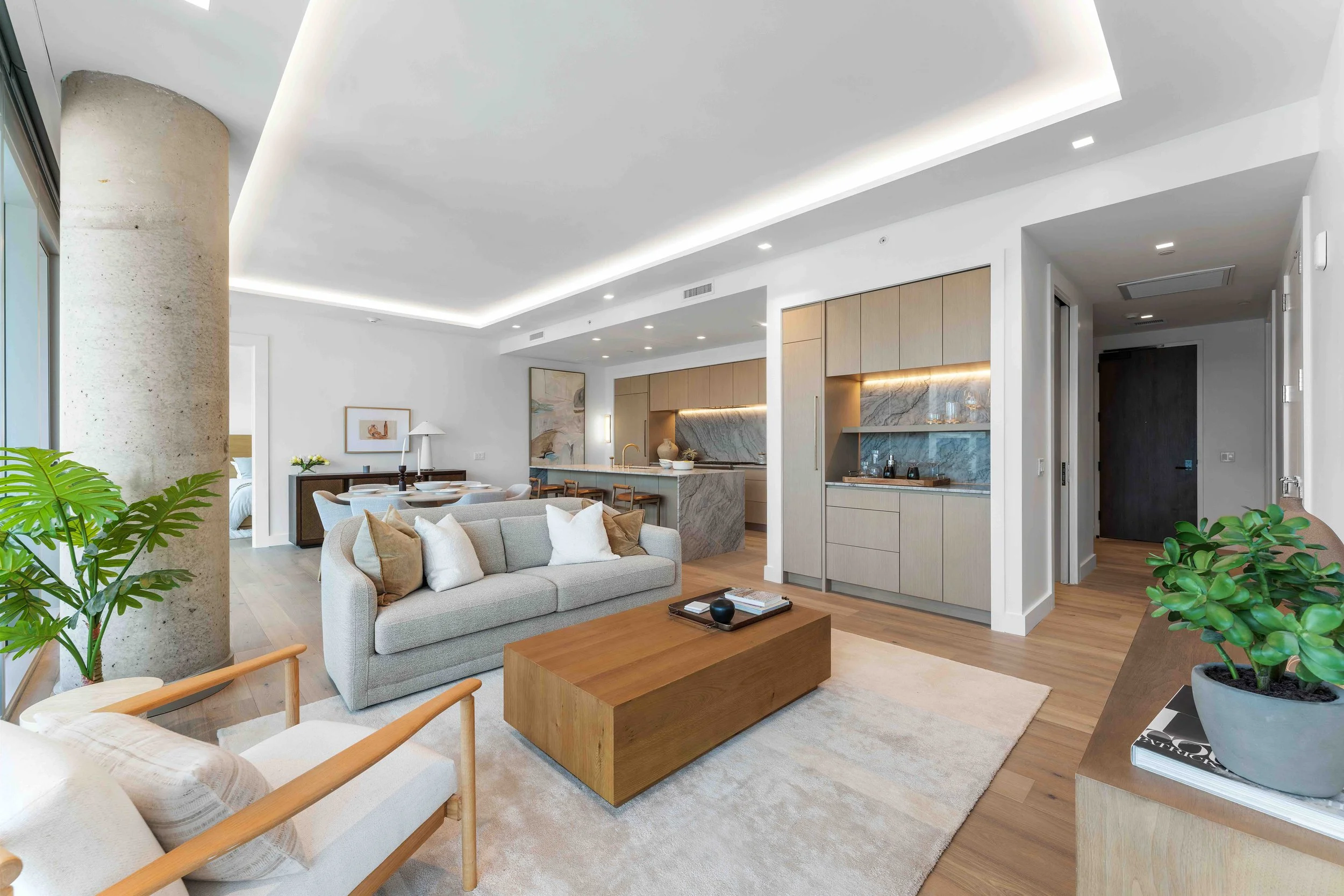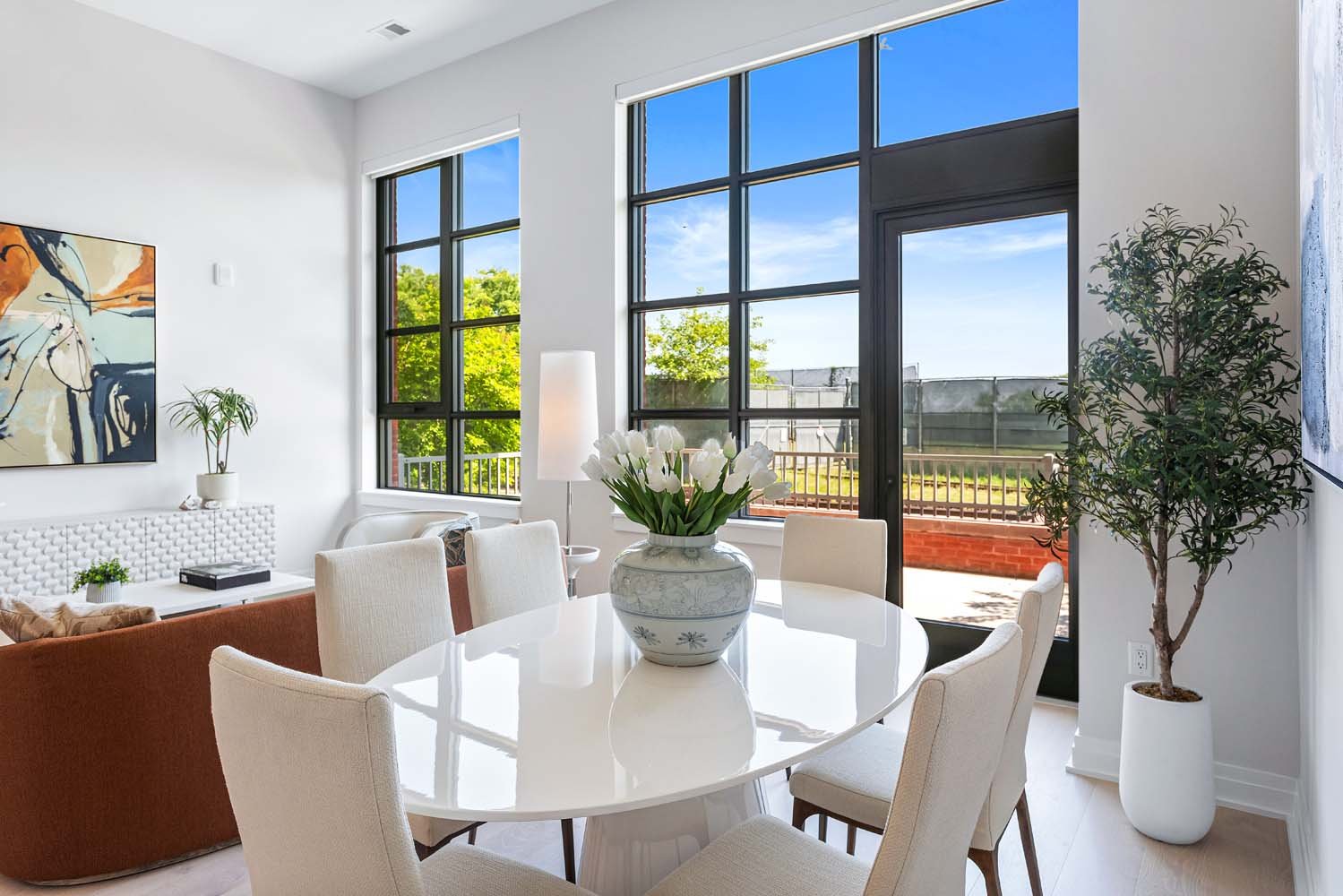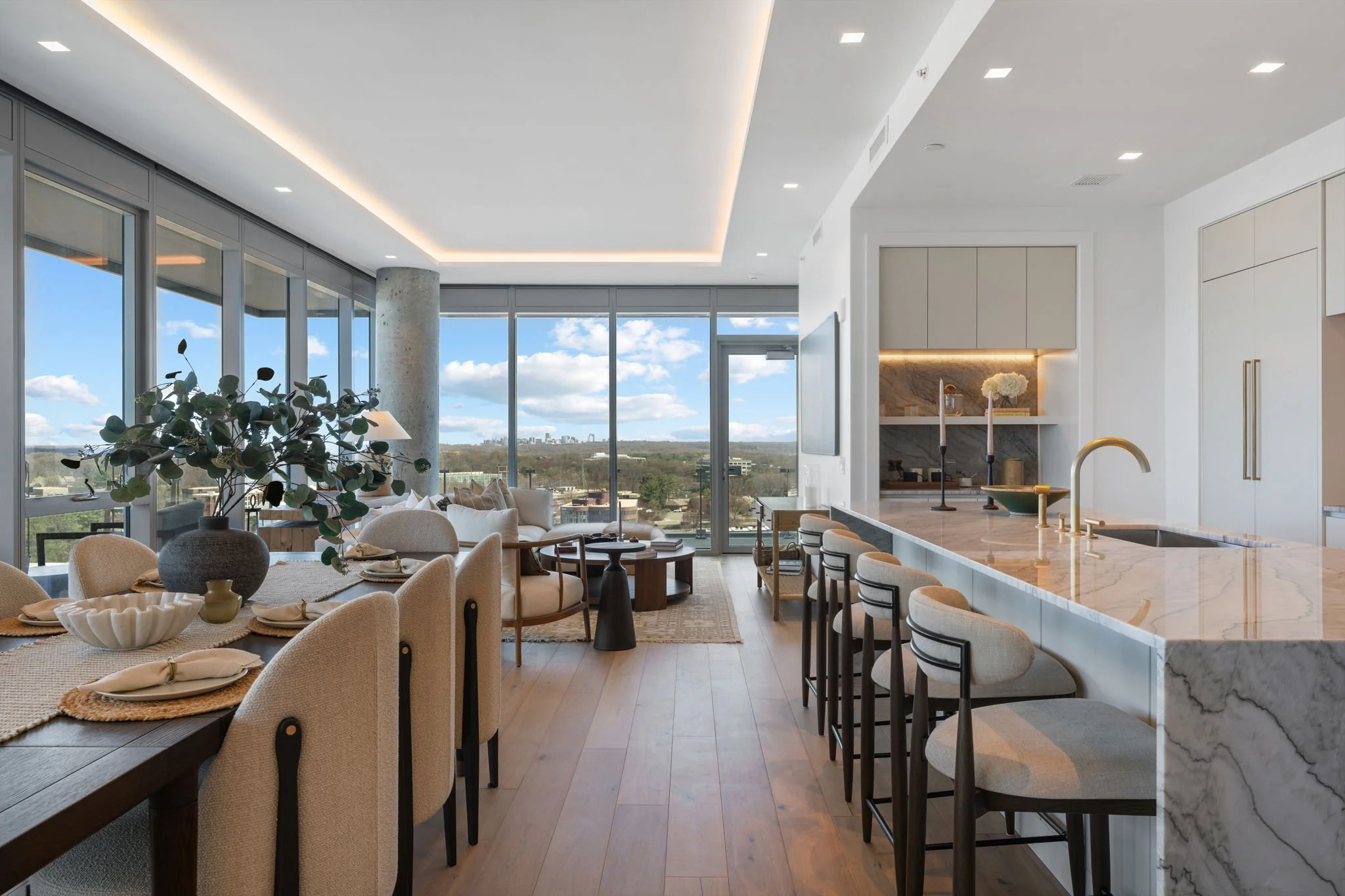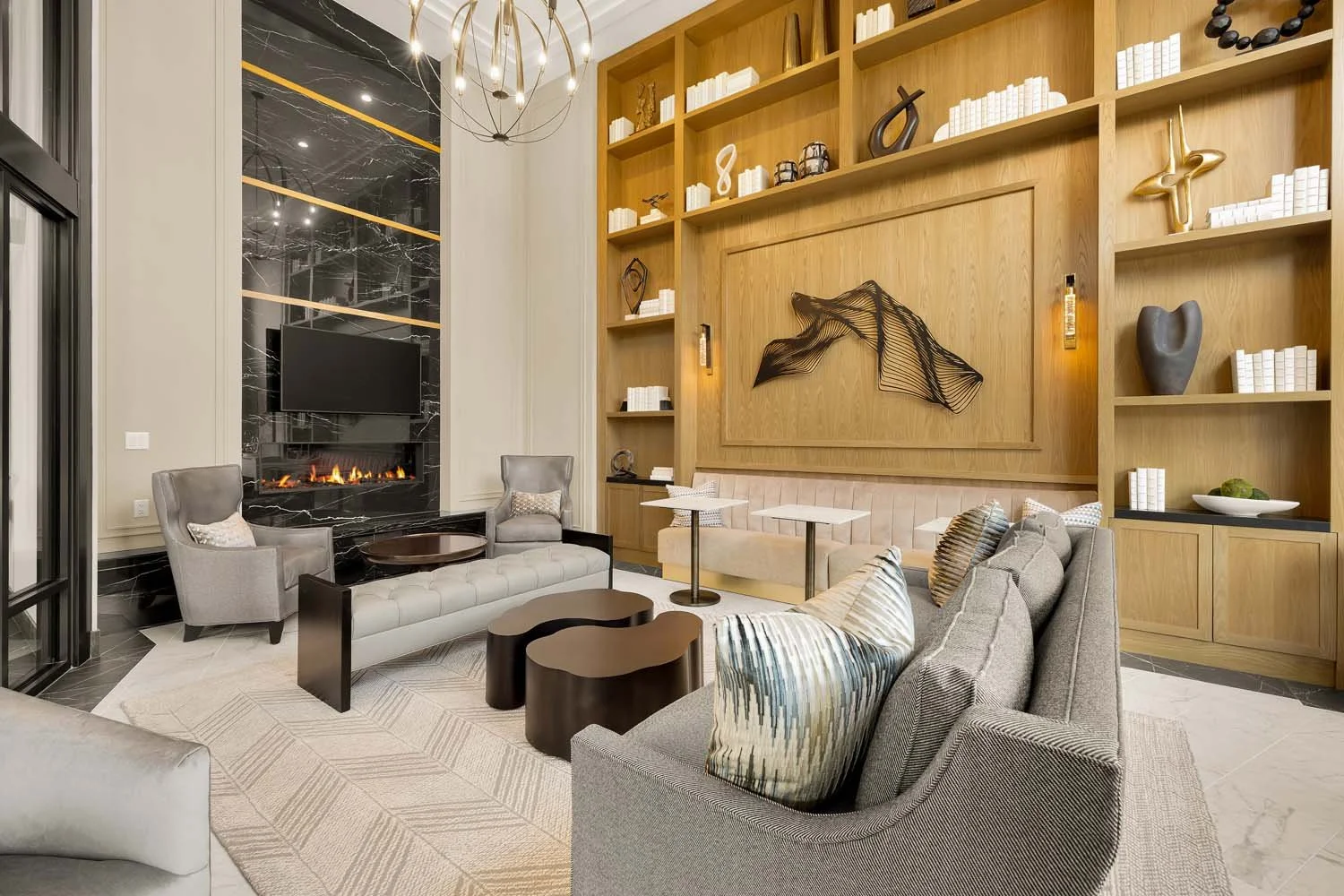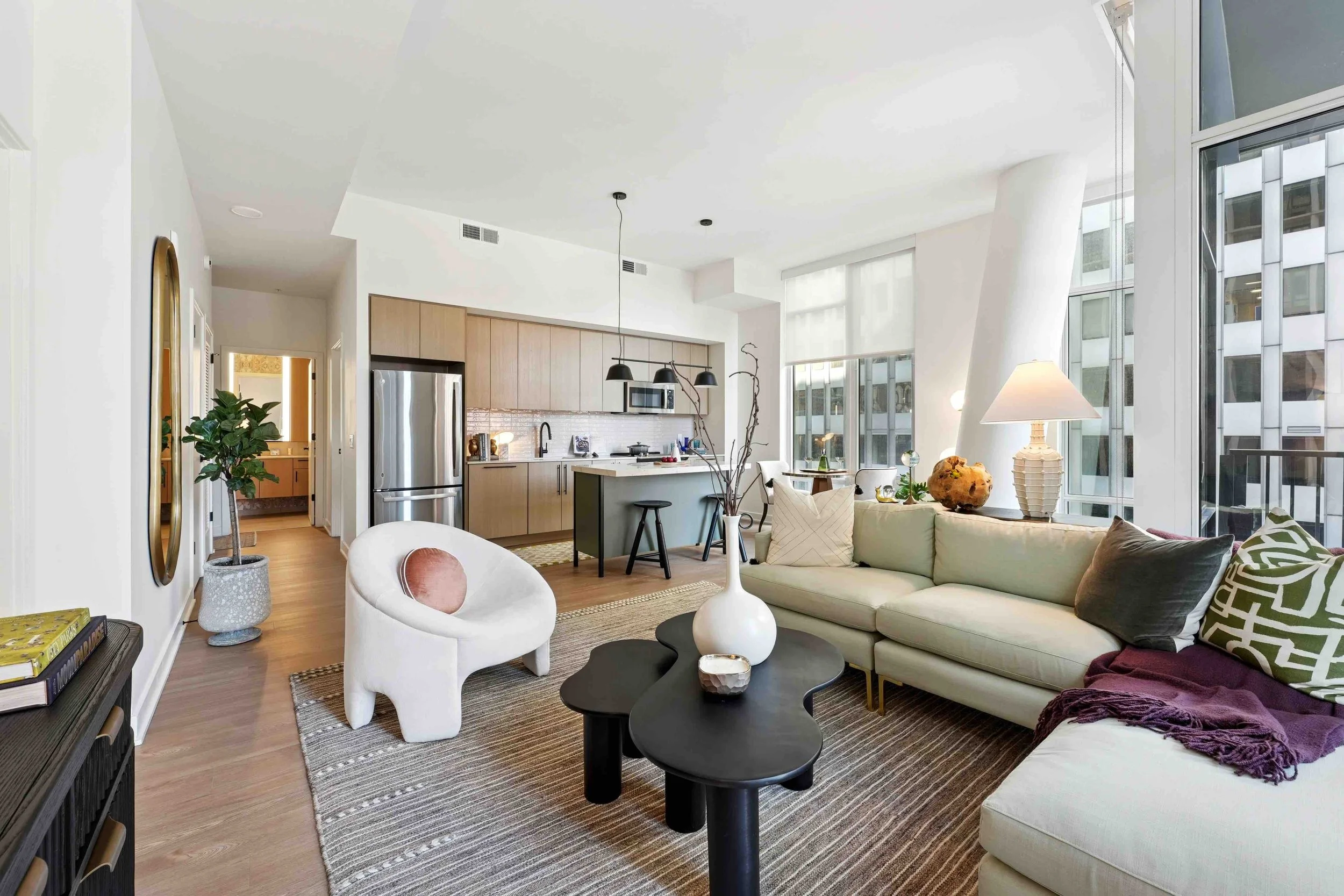
Sales & Leasing Best Practices
Inspired by Elevated Service, Connection, and Emotional Intelligence
Section 1: Project Statement
Every new development is a unique opportunity to shape not just homes, but a lasting sense of place. No two projects are the same - each reflects the distinct vision of its developer, the character of the surrounding neighborhood, and the evolving needs of the people who will one day call it home.
Behind every successful project is a thoughtful and intentional design process. Developers invest significant time and resources to ensure their communities integrate seamlessly into the local urban carpet, respect the history of the area, and enhance the lives of future residents. From architectural design to amenity programming, every decision is made with purpose.
As members of the McWilliams Ballard sales or leasing team, we are entrusted with more than simply facilitating transactions - we are stewards of this vision. Our role is to lead with professionalism, insight, innovation and hospitality and to work in collaboration within the broader project team which includes developers, architects, designers and marketing experts. To succeed, we must immerse ourselves in the “story” of the community, understand its values and effectively communicate its promise with clarity and conviction.
Ultimately, our success lies in our ability to connect people with places in a way that is meaningful, enduring and true to the spirit of the community we are developing. We are not just transacting homes - we are helping build communities.
Service Standards: How We Show Up
Exceptional service is the foundation of our work. Every member of the team is expected to contribute to a culture of professionalism, courtesy and care - extending thoughtful assistance not only to clients and customers, but also to colleagues, project partners, visitors and callers.
Our goal is to create a consistently elevated experience at every touch point. This requires more than simply responding to requests - it means taking initiative, anticipating needs, and demonstrating a genuine sense of hospitality. Understanding the goals, preferences and concerns of those we serve allows us to tailor our approach and deliver meaningful interactions and personalized support.
This standard of service extends beyond the duration of the transaction. By acting as a trusted advisor and project steward throughout the process, we help build long term relationships rooted in trust and respect.
Every McWilliams Ballard team member is duly responsible for upholding the principles of the Federal Fair Housing Policy Act, ensuring all interactions reflect fairness, equity and professionalism.
When leading with integrity and empathy, we not only support successful outcomes, we foster lasting impressions that encourage loyalty, advocacy and future referrals.
Section 2: The Team
Every community McWilliams Ballard represents is the result of collaboration between multiple stakeholders - developers, architects, branding agencies, sales and marketing professionals and more. While each partner brings a distinct perspective and expertise, we all work toward a shared goal: the successful sellout or lease-up of the community.
Understanding how these roles intersect is essential to deriving a seamless and informed client experience. For details on your specific project’s team members and contact information, please refer to your Project Manager.
Section 3: Daily Sales Office Operations
General Standards
Prospects will have the opportunity to meet with McWilliams Ballard sales or leasing staff by appointment either onsite or at an offsite location. Each appointment represents a critical touchpoint in the client experience and should reflect the professionalism and polish of the community we represent.
Professional Presentation & Dress Code
McWilliams Ballard maintains a standard of professional casual attire in all sales and leasing offices. Business casual is appropriate every day. Jeans are not considered professional attire and are never permitted during work hours. McWilliams Ballard does not observe “casual Fridays”. One’s appearance should consistently reflect the high standards of the brand and the community.
The Office Environment
McWilliams Ballard sales and leasing offices are thoughtfully designed to serve dual functions - they are both the team’s workplace and a front-facing space for client interaction and site tours. As such, the office must remain clean, organized, and always welcoming. The office space should embody the spirit and vision of your community and reflect the level of quality and care that prospective residents can expect.
Workspaces should be uncluttered, materials neatly stored, and common areas kept tidy. The overall environment must be professional, comfortable and conducive to delivering a best-in-class guest experience.
Appointment Preparedness
To ensure every appointment is seamless and impactful, team members should arrive at least 20 minutes prior to any scheduled meeting. This allows time to prepare the space, review prospect particulars, gather marketing materials and ensure the environment is fully “appointment ready”.
The following section outlines the detailed procedures for opening and closing the sales or leasing office, daily operational protocols, and standards for ongoing office maintenance.
Opening Procedures
Unlock front door
Turn on all lights
Turn on music
Ensure area surrounding the model is presentable and free of construction debris
Install any temporary signage (if applicable)
Ensure beverage and snack centers are fully stocked
Ensure temperature is comfortable in the office (not too hot for guests)
Check voicemails and distribute or make call backs as necessary
Check if any web leads came in overnight and return as necessary & update lead database
Check emails and return or forward as necessary
Ongoing Procedures
Answer calls and emails, forward as necessary
Check voicemail
Tour prospects
Replenish guest cards, brochures and business cards as needed
Enter guest registration cards into lead management software as necessary
Replenish and reorganize refreshments
Ensure temperature is comfortable in the office (not too hot for guests)
Light clean if necessary (for example if something spills on the floor, clean it up.)
Ensure tour path is free from debris.
Prepare office inventory for supplies, refreshments and collateral (monthly)
Prepare a punch list of any necessary sales office and model home repairs and submit to Project Manager and Client
Closing Procedures
Replenish and organize refreshments
Replenish brochures, business cards and guest registration cards
Turn off computer
Turn off lights
Lock and close door
Bring in temporary signage (if applicable)
Handling Guests
The sales or leasing office is often the first point of contact for prospects, making it a critical opportunity to shape their impression of your community. The environment should feel warm, polished and thoughtfully prepared - much like welcoming someone into your home. The goal is to ensure every visitor feels comfortable, never rushed, and certainly never as though they are intruding.
Hospitality is not just a gesture - it is a standard. In keeping with the McWilliams Ballard Service Standard, the following guidelines outline the expected approach to handling guests:
Greet with warmth and intention
Stand to welcome each guest as they enter. Use their name, if known, and introduce yourself in a friendly professional manner.
Offer a refreshment
Extend a genuine offer for a cold drink. Opening the refrigerator while doing so reinforced the gesture and communicates abundance.
Create a relaxed atmosphere
Invite guests to explore the office or presentation space freely. If they take a seat, do the same. This signals that you are comfortable with their presence and encourages them to stay. Elevate the atmosphere with brand-aligned music, subtle scent, fresh florals and signature refreshments.
Stay present and personable
Avoid remaining behind your desk during conversations. Emerging from behind your desk, being attentive, approachable and fully engaged throughout the visit makes a lasting impression.
Respect the moment
Should the phone ring and you are alone in the office, let it go to voicemail. The visitor in front of you deserves your full attention.
Make guests feel welcome
From the moment they arrive, ensure your body language, tone and demeanor reinforce that they are not interrupting your day, they are the reason you are here.
Every visitor interaction is a reflection of the McWilliams Ballard brand and values and your community. By consistently offering a warm, gracious and attentive experience, we build trust, foster connection and elevate the overall perception of the property.
Organizing the Office
A clean, orderly office reflects the level of professionalism and care we bring to every aspect of our work. Because the sales and leasing office doubles as a presentation space for prospects, it must remain tidy, uncluttered and guest-ready at all times. The following guidelines are in place to help maintain a welcoming and polished environment:
Refreshments
Refreshments should be neatly lined up in the refrigerator, with labels facing forward for easy visibility
Personal Meals
Please store your personal meal discreetly in a drawer within the refrigerator, out of view from guests.
Desks/Workspaces
Please ensure your workspace is kept free of clutter. Keep personal items, paperwork and miscellaneous belongings out of sight.
Office Inventory
Supplies and materials must be kept in an organized fashion, properly stored and free from excessive accumulation.
Food With Strong Odors
Food with strong odors are unwelcome in the office. They should not be heated or consumed in the office.
Leftover or Uneaten Food
Dispose of any leftover or uneaten food promptly and be sure to clean up after yourself. Food should never be left on desks or in common areas.
Restrooms
Ensure these areas are clean and tidy at all times, supplies are replenished throughout the day and personal items are removed after use.
Examples of the Office Standard for Organization and Presentation
Elevate the atmosphere with elegant music, subtle scent, fresh florals, and signature refreshments.
Section 4: Definition of Traffic Types and Processes
McWilliams Ballard regularly welcomes two primary types of traffic: prospective buyers or renters and licensed real estate agents or brokers. Each visit — regardless of origin — presents a vital opportunity to create a positive and lasting first impression.
It is essential that all visitors are greeted promptly, professionally and with a warm, welcoming demeanor. A team member should always rise to greet guests with a smile and an introduction, setting the tone for a professional and engaging experience. Periodic training may be conducted to ensure alignment on greeting protocols and messaging.
Guest Experience and Compliance Standards
Every individual — whether a member of the public or a licensed real estate professional — must be treated with fairness, respect and consistency in accordance with the McWilliams Ballard Service Standard and all Federal Fair Housing regulations.
Each visitor should be treated with personalized attention and professionalism with the goal of building trust, providing clear information and delivering a memorable experience. Ensuring a positive, respectful and informative experience for all traffic types helps reinforce the values of the community brand and its overall success.
Traffic Type 1: Brokers/Agents
Definition: Licensed real estate professional visiting to gain knowledge of the community on behalf of the community or as part of industry networking.
Local and regional agents and brokers will also be invited to learn more about the community. Outreach to this audience will be conducted through a combination of direct communication from the sales or leasing team and strategic initiatives within the approved marketing plan.
These professionals are essentials in the success of the community and should be treated with the same level of courtesy, professionalism and attentiveness as prospective clients.
Source:
Direct outreach from sales team
Broker events or open houses
MLS visibility or industry announcements
Marketing campaigns targeting agent networks
Sales Team Protocol
Greet professionally and introduce yourself
Confirm brokerages and client (if applicable)
Offer a beverage and thank them for visiting
Present community overview with broker focused language
Inventory/Availability of homes
Client benefits (incentives)
Commission details (incentives)
Amenity programming
Visit spec homes (if applicable)
Provide takeaways such as brochures floor plans, or agent specific materials
Log visit in MB Real InSite with brokerage info and client info, if applicable
Follow up to keep them engaged and informed of updates, pricing or new releases.
Traffic Type 2: Prospects/General Public
Definition: Individuals from the general public - local, regional or national who are interested in learning more about making your community home.
Once marketing efforts are underway, members of the general public will have the opportunity to schedule appointments to learn more about your community. These prospective clients may come from the local area, the broader region or even across the country. A comprehensive marketing plan directed by your Project Manager will support awareness and drive traffic to your sales or leasing office.
Source:
Website inquiries
Marketing campaigns (digital, print, social)
Referrals
Walk-ins
Brokers/Real Estate Agents
Sales Team Protocol
Stand and greet warmly as if the guest were expected
Use name where possible and offer refreshments in a calm, polished manner
Confirm appointment (if applicable) or log as walk-in traffic
Invite exploration of the presentation space
Begin a tailored presentation based on their needs, interest level and buyer profile.
Present overview of community
Review amenities, programming and available floor plans
Explain current availability/inventory
Visit model/spec homes, if available
Begin “qualifying” prospect as it relates to their purchaser or leasing needs
Determine if primary or 2nd home buyer
Understand pricing needs
Explain additional fees (move in fees, condo fees, etc)
Understand move-in timeframe
Discern lending needs, if any
Provide takeaways tailored to prospect such as floor plans, brochure, lending information, etc.
Complete guest registration card and Log traffic in MB Real InSite immediately after the appointment
Follow up promptly with relevant materials and a thank you message.
Follow-Up
Thoughtful, consistent follow-up is both a professional courtesy and a critical step in building lasting relationships with prospects. A well-executed follow-up strategy not only reinforces a positive impression — it often plays a decisive role in closing a sale or lease.
Every prospect should receive timely, personalized communication following their visit. In addition to individual outreach from the sales or leasing team, the project website is equipped with an automatic email response system to acknowledge online inquiries. This ensures every registrant receives a professional, immediate response - even before direct contact is made.
Follow-up should reflect the individual prospect’s needs, questions and timeline. Before the appointment ends, ask for permission to stay in touch and confirm their preferred method of contact. Record this in MB Real InSite for future reference.
Follow-Up Methods
Follow up should always feel personal, relevant and aligned with the prospects communication preferences. Appropriate methods include:
Handwritten notes on branded stationary
Personalized email messages
Phone calls or text messages (when appropriate and requested)
Targeted e-blasts featuring new releases, events, updates, etc.
Mention something specific from their visit to show attentiveness and care.
Include any key information covered during the tour (e.g., pricing, timeline, incentives).
Use each follow-up as an opportunity to reinforce the community’s value and lifestyle and to build urgency.
Follow-Up Timetable
The follow-up philosophy at McWilliams Ballard is simple. Stay in touch until the prospect asks you not to. This means maintaining consistent, meaningful communication without being intrusive. Always remaining respectful in tone, accurate with information and intentional in your messaging.
Use follow-up to create moments of reconnection that feel thoughtful - not transactional. Consider touch points such as:
Community wide events or neighborhood news
Local restaurant happenings
Boutique openings
Hosted events or private previews hosted by your community
Pricing updates or limited time incentives
Constructions progress images or milestone updates
Inspiring lifestyle imagery to reignite interest
New phase or lot releases
Inquire about upcoming or recent vacation
Ask about their holiday or seasonal plans
When you genuinely listen to your prospects, follow-up opportunities become effortless. Let their story guide your strategy and always lead with value.
Section 5: Maintenance of Sales or Leasing Office
As sales or leasing efforts begin, the most powerful tool we have to showcase the community, in some cases, is the sales or leasing office. This space serves as both a day-to-day workplace and a front-facing environment where prospective buyers, renters and brokers are introduced to your community.
To ensure a best in class first impression, the office must always reflect a high standard of professionalism, cleanliness and hospitality.
First Impressions Matter
The presentation of the sales or leasing office directly influences how a prospect perceives the community. A clean, polished and well-maintained space builds trust and conveys the level of care that has gone into the development.
If you observe that the office requires additional cleaning or maintenance - such as malfunctioning lighting, unsatisfactory janitorial service or unaddressed upkeep - notify your Project Manager immediately. They will coordinate solutions or escalate concerns to the Ownership Group as needed.
Standard of Cleanliness & Presentation
The Sales or Leasing Office must be kept clean, presentable and fully operational at all times. The following standards must be met daily:
Front door is free of smudges, dirt and marks
Door hardware and plumbing fixtures are polished and fingerprint free
Floors are spotless and free of debris
Rugs and carpets are clean and regularly vacuumed
Countertops are free of dust, fingerprints and clutter
All lighting is operational; no burned-out bulbs
Closets and cabinets are organized and free of overflow
Trash bins are out of sight and emptied regularly
Accessories and decor are cleaned, styled and neatly arranged
Television is turned on and running approved community media
Music is streaming approved content and at comfortable volume
The refrigerator is fully stocked, clean and organized
Brochures and printed materials are available and neatly displayed
Restroom is stocked and in working order, toilets are flushed and seats are in closed position
Maintaining this standard demonstrates our commitment to excellence and ensures that every visitor to the office experiences the level of care, price and attention that helps define your community.
Section 6: Reporting & Communication Protocols
Clear and consistent communication with the Ownership Group and approved stakeholders is essential to the success of your community. Regular reporting provides transparency, accountability, tracks momentum and ensures alignment across all parties involved. Please check with your Project Manager for your applicable distribution list.
The following outlines the reporting schedule, description of each report and distribution guidelines.
Confidentiality Reminder
Reports are to be shared only with approved recipients. Sharing reporting material with unapproved individuals is strictly prohibited. If you are unsure whether a team member or person outside your organization is authorized to receive a report, please consult your Project Manager before proceeding.
Daily Reporting
During the active sales or leasing phase a daily report must be submitted at the end of each workday. This report captures the day’s key performance indicators and activity levels, allowing stakeholders to monitor progress in real time.
Format: The report is distributed via email in the body of the message (not as an attachment) using a clear and consistent format.
Visitors 1
Purchase/Lease Interest 1
Be-back 0
Sales 0
Sales to date 0
[Prospect] visited today. He used to live in XXX but has been living with his daughter in Tampa. He received our e-blast and called to schedule an appointment to view the offering. After a full presentation he was most focused on our 2 bedroom condos. We have sent a thank you note and will continue to follow up.
Weekly Reporting
A comprehensive Weekly Summary Report is to be submitted every Sunday evening to the approved distribution list. This report offers a high-level view of the weekly activity and performance.
Format: The report should be sent via email with the summary invited in the body of the email, not as a standalone attachment. A set of 6 supporting attachments must accompany the report. These documents should be updated through the end of Sunday to reflect all activity from the week. Ensure that all figures and updates are current and accurate before submission.
Visitors 2
Purchase/Lease Interest 1
Be-back 0
Sales 2
Sales to date 3
We are pleased to announce that we have two new sales this week. Mr. Smith has decided to move forward with Residence 08 and Ms. Cohen has purchased Residence 02.
We had 2 visitors today: Sherry saw our ad in the newspaper and decided to come in for a closer look. She just started looking and is most focused on our 1 BR options. We gave her a full presentation. She is in the information gathering stage. Tim came in with his family. They only had a few minutes so we gave an abridged presentation and scheduled them for a more in depth presentation next week. Their interest lies in our 3 BR options.
Both parties have received a thank you note and we will continue to follow up.
Section 7: Messaging Scripts
Clear, confident and consistent messaging is essential to the success of the sales and leasing effort. Whether engaging with prospects in person, over the phone, or via email, maintaining a united and professional tone across the team ensures clarity, reinforces brand integrity and prevents miscommunication.
Below is a sample script for handling incoming sales or leasing phone calls. While the exact conversation may vary, the tine should always be upbeat, confident and welcoming.
Scenario: Incoming Sale or Leasing Phone Call
Goal: Convert the inquiry into an appointment. Use the website as a visual tool to support the conversation and build excitement. Always gather the caller’s name, contact information and lead source and suggest a visit in person if appropriate.
Phone rings.
[Sales Rep]:
“Good (morning/afternoon), Thank you for calling [Community Name], This is [Your Name]. How may I help you?”
Caller:
“Hi. I’m calling to ask the pricing for a 2 bedroom”
[Sales Rep]:
“Great question! I’d be happy to help. We offer a few different two bedroom floor plans and pricing starts around $1.5 MM. Have you had a chance to visit our website yet to review the available floor plans?”
Caller:
“Yes. I’m actually on the site right now.”
[Sales Rep]:
“Perfect-let me walk you through what you’re seeing and highlight a few of the layouts and features that might interest you. While we chat, I’d also love to hear more about what you’re looking for so I can help tailor some options to your needs.”
(During this part of the call, the sale or leasing agent navigates the website with the caller, shares key selling points and begins to qualify the prospect by learning about their priorities, timeline and preferences. The agent may also introduce community amenities and surrounding neighborhood and any other resident benefits.)
[Sales Rep]:
“It sounds like [Floor Plan Name] could be a great fit for you. I’d love to invite you in for a visit - we’ve created a fully immersive experience in our sales office and have model homes available for viewing. Would next week work for you?”
Caller:
“I plan on visiting next week. Saturday works.”
[Sales Rep]:
“Perfect. The weather has been beautiful and I think you’ll really enjoy visiting the community in person. How about we schedule you for 11:30 am on Saturday?”
Caller:
“That sounds great.”
[Sales Rep]:
“Perfect, I’ve got you down for 11:30 am this Saturday. Would you like for me to email you directions and additional visit details?”
Caller:
“Sure that would be great. My email address is [email@example.com].”
[Sales Rep]:
“Excellent - I will do that shortly.. I look forward to meeting you next Saturday. Have a great day.”
Caller:
“Thanks, you too. Bye.”
Call ends.
Scenario: Broker Preview Phone Call
Goal: Schedule a future appointment for the broker and or their client to visit. Focus on being a knowledgeable and collaborative resource. Always gather the broker’s name, contact information, client’s timeline and extend and offer to send follow up materials.
Phone rings.
[Sales Rep]:
“Good (morning/afternoon), Thanks for calling [Community Name]. This is [Your Name]. How may I help you today?”
Caller:
“This is Joanna from Coldwell Banker. I am calling to check pricing and availability on your two-bedroom homes. Do you have anything available?”
[Sales Rep]:
“Hi Joanna,. It is great to hear from you! Yes, we currently have a couple of two-bedroom options for you. We offer several floor plan variations depending on your client’s needs. Are you working with someone actively looking?”
Caller:
“Yes - I have a client from New York who’s planning to purchase something soon.”
[Sales Rep]:
“That sounds like perfect timing. As you may recall from your last visit, the building is nearing completion and there are some strong opportunities right now for early occupancy.”
Caller:
“He will be in town at the end of the month. I am setting up tours at a few other buildings and plan to include yours.”
[Sales Rep]:
“Excellent. I will follow up with you in a couple weeks to confirm a specific date and time. In the meantime, I would be happy to send you updated pricing, floorplans, and availability if that would be helpful.”
Caller:
“Sounds good. See you soon.”
[Sales Rep]:
“Looking forward to it, Joanna. Have a great day.”
Calls Ends.
Competitive Project Survey Phone Calls
Regular outreach to comparable communities is an essential part of staying informed and competitive in the marketplace. The purpose of these calls is to gather the most up to date information on pricing, activity and incentives at nearby developments, while also fostering positive industry relationships.
These conversations should be professional, courteous and mutually beneficial. While the information shared may vary week to week the tone should always be collaborative - not adversarial.
Primary Objectives
Confirm key data points that impact pricing and positioning
Build rapport with fellow industry professionals
Stay current on market shifts, offerings and sales velocity
Suggested Talking Points
Confirm unit pricing relevant to your current availability
Verify square footage and views associated with quoted pricing
Ask about changes to any fees such as HOA or condo dues, etc.
Confirm whether broker commissions have changed, if so, request updated details
Ensure services and amenities remain consistent with prior information
Inquire about sales to date, weekly traffic, settlements, and move-ins
Ask about any special incentives
Inquire about any preferred or designated lender programs
Thank them for their time and willingness to share
Section 8: Delivering Challenging Messages
Every real estate project presents unique challenges - and your community is no exception. From shifting market conditions and broader economic uncertainty to cautious media coverage, there will be times when buyers and renters approach with hesitation or skepticism.
Handling these conversations with grace, confidence and sincerity is a crucial part of the sales process. Be it in person or over the phone, it is essential to maintain an upbeat tone, a positive outlook and a sense of authority. Prospects respond best when they feel they are speaking with someone who is knowledgeable, honest and invested in their success. Below are examples of commonly encountered challenging topics along with suggested talking points and tone guidance.
Inventory Control
Buyer Question: “Why are there only a limited number of homes available?”
Suggested Messaging: “At our community, we have taken a more curated, phased approach to releasing homes. Rather than overwhelming prospects with a full pricing list and floor plan matrix, we release a select number of residences at a time to better match current prospect demand and ensure a balanced mix of options. Further, this ensures a good mix of inventory as we move through the sales or leasing process through close out.
This allows us to create a more personalized experience. Instead of handing out generic price sheets, we tailor the discussion to your preferences - providing pricing and availability on the specific floor plans that best match your needs. If what we are currently featuring does not quite fit, we always have a broader inventory to explore together.”
Tone Tip: Present this approach as thoughtful, prospect focused and deliberate, not restrictive.
Comparison to Competitors
Buyer Question: “Why should I choose your community over XXX (the competition)?”
Suggested Messaging: “Price is important, but today’s consumer also values quality, reputation and long-term investment potential. What really sets this community apart is the combination of our location, the pedigree of our developer and the quality of the homes themselves.
What makes our community so special:
Our walkable location and neighborhood amenities
The developer’s track record of a thoughtful and enduring commitment to the community
The design, floor plan and finishes unique to this project
Our tailored relationship drive-approach to sales/leasing
Our job is to help you determine what is most important to you - to work with you to make an informed decision and ensure we’re a fit based on those priorities.”
Tone Tip: Be confident and comparative without being defensive. We do not position ourselves by speaking negatively about others, instead we focus on what makes our community so special.
Creating Urgency
Buyer Comment: “I’m not in a rush. I’m just looking for now.”
Suggested Messaging: “Totally Understandable. Many of our buyers/residents initially felt the same way. What we have seen, however, is that timing often becomes more clear once you find something that feels right.
We are in a phase right now where availability is still slightly strong, but interest is picking up as we are in the Spring buying season and some of our most popular plans are selling out. Staying ahead of the curve gives you more options and negotiating room.
I will continue to keep you updated with anything that matches what we discussed and when you are ready we will be here to guide the process.”
Tone Tip: Use urgency as a tool to inform, not to pressure. Focus on the benefits of timing without applying artificial deadlines.
Section 9: Closing Message
Success in sales and leasing is never accidental. It is the product of preparation, consistency, professionalism and, most importantly, a genuine commitment to service.
The best practices outlined in this guide are more than operational guidelines; they are a reflection of our collective standards, our reputation in the marketplace and the experience we promise to deliver at every touch point.
Every conversation, every tour, every interaction is an opportunity to build trust, inspire confidence and elevate the story of your community. When each member of the team shows up with integrity, empathy and excellence we don’t just meet expectations - we exceed them.


